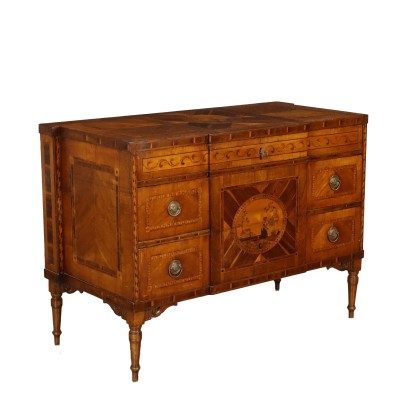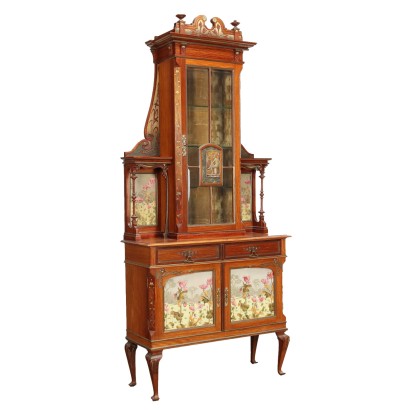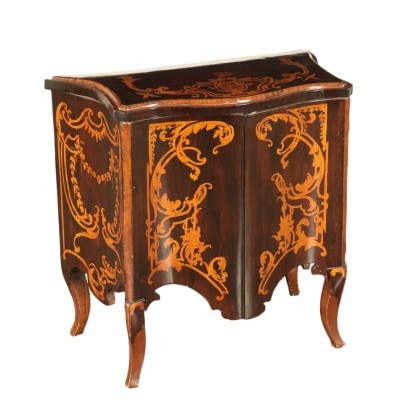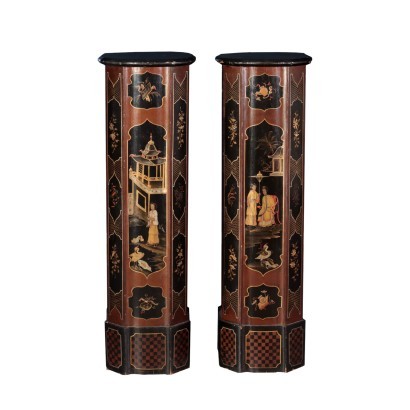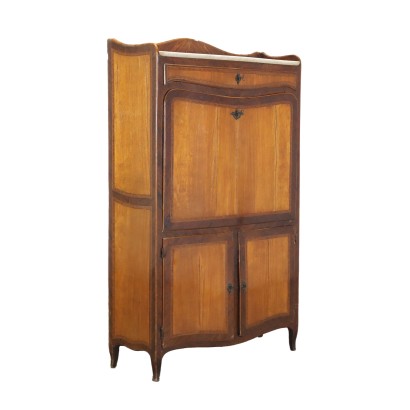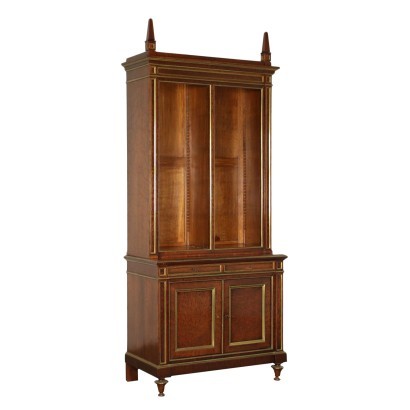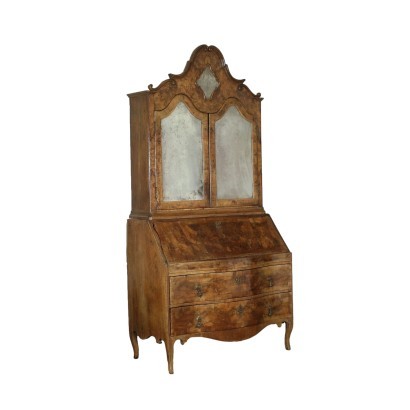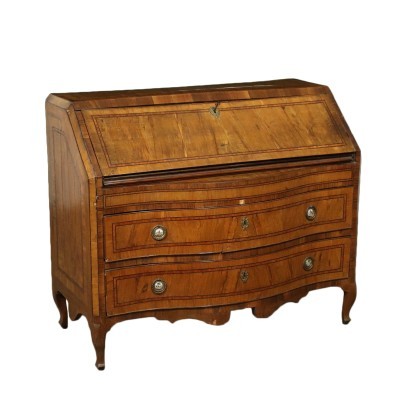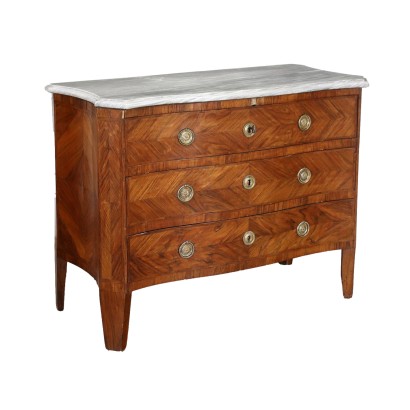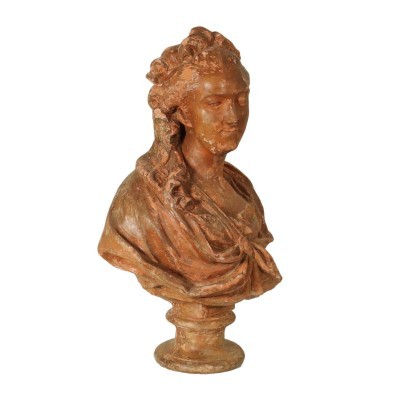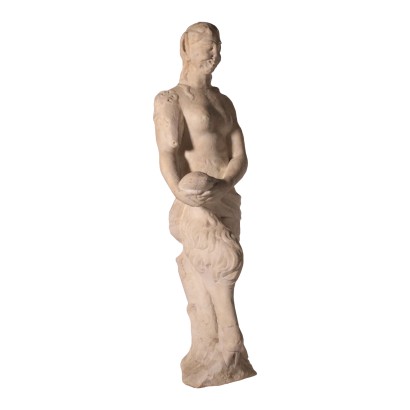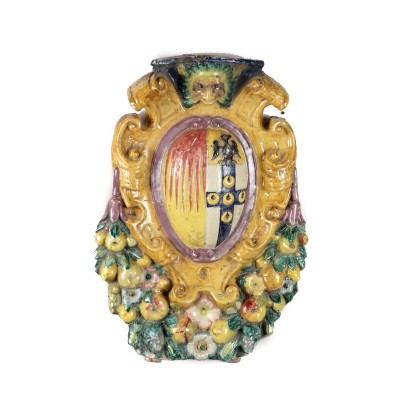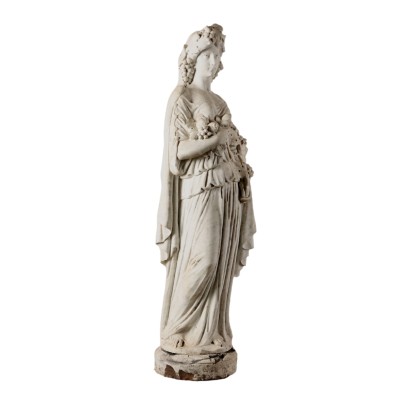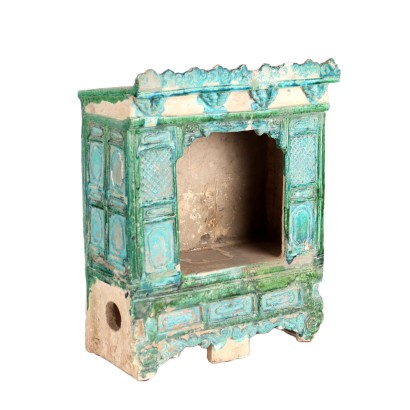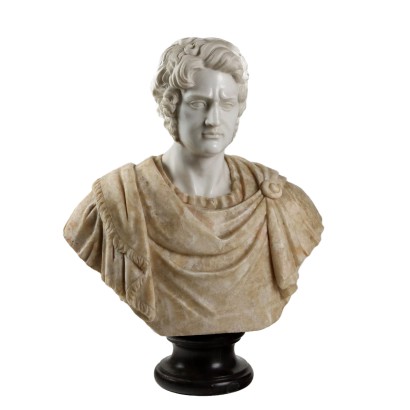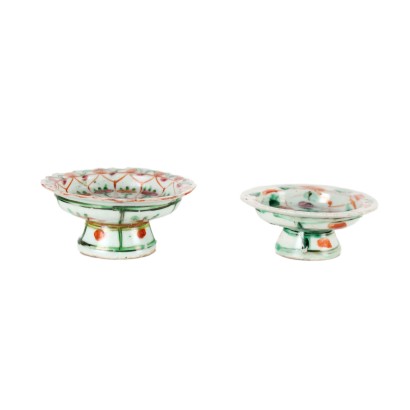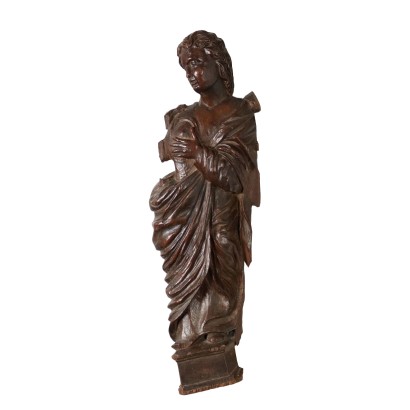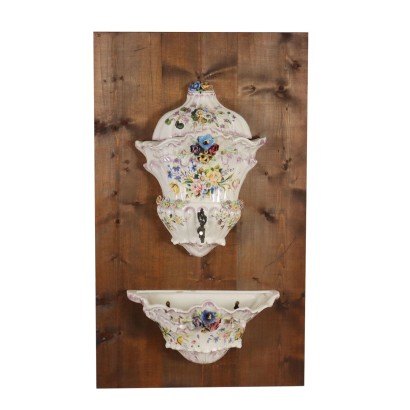Neoclassical Chest of Drawers Maple Italy XIX Century - Sudtirol 1808
Features
Sudtirol 1808
Style: Neo-Classical (1765-1790)
Age: 18th Century / 1701 - 1800
Origin: Trentino Alto Adige, Italy
Main essence: Silver Fir , Maple , Various Wood Essences , Walnut
Material: Shear plate , Walnut , Painted Wood
Description
Neoclassical chest of drawers from Trentino veneered in walnut and inlaid, Trentino-Alto Adige 1808. Top with central medallion inlaid within a Greek bellflower and quadripartite reserve, portraying a female figure intent on performing a propitiatory seasonal rite. This figure is taken up inside a second medallion placed on the front, the latter broken with a projecting central section, intent on carving the actual date of construction of the "MDCCCVIII" chest of drawers on the trunk of a tree. Threaded in maple and inlaid with ribbon, Greek and phytomorphic elements in various essences on the front and sides. Carved shelves flank the truncated cone legs, ending with a vase foot. Details of the painted medallions, handles in sheet metal with plant effigy, interior in fir. Restorations. This chest of drawers represents one of the highest quality specimens relating to the Trentino production.
Product Condition:
Product that due to age and wear requires restoration and resumption of polishing.
Dimensions (cm):
Height: 91,5
Width: 128,5
Depth: 61,5
Additional Information
Style: Neo-Classical (1765-1790)
This historical period includes a first phase that can be properly defined as the Louis XVI style.nOnly at a later time, with the maturation of archaeological fashions, was a new vision of furnishing civilization formulated and codified, now fully attributable to the Neoclassical Style.
In fact, both trends coexisted in unison until the last years of the eighteenth century.
nIn the field of cabinet making, the Directoire, Retour d'Egypte, Consular and Empire styles also fall within the neoclassical era.
nFind out more about Neoclassicism with the insights from our blog...
n



